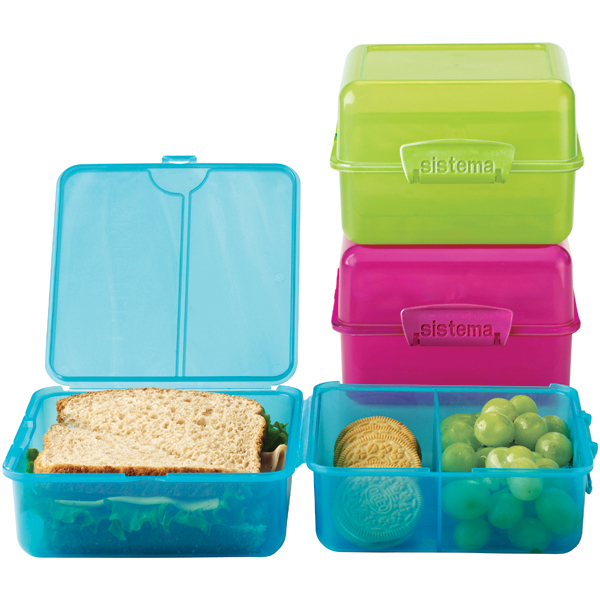With the start of a new school year, you may find yourself thinking about new positive habits and routines for your kids (and yourself!). You want what’s best and healthy for your kids, but sometimes it’s hard to know where to begin. If you’re one of millions of parents packing lunches before you send your loved ones off to school, learning how to pack an eco-friendly school lunch is an excellent starting point. Being mindful in your waste production and what you’re eating is a great way to support the health of your family, and it also helps out your environment and your local community!
From carefully choosing which products you’ll use to planning around locally sourced ingredients, read on for our best tips to make lunches healthier and better for everyone involved. With some mindful planning, you’ll be able to send your kids to school with a wonderful meal instead of reaching for a Lunch-able.
[vc_separator type=’normal’ position=’center’ color=” thickness=’1′ up=’25’ down=’40’]
Designate Areas in Your Fridge & Pantry
An eco-friendly school lunch starts long before you pull out the peanut butter! Creating a space and organizational system for food and non-food items you use for lunches will not only save you time and money; it’ll reduce waste, too. When you can see exactly what you have, you’ll be less likely to overbuy food items.
Place bins in your refrigerator and pantry, and cabinets. These will contain the varying snacks, food staples, and supplies that you need right at your fingertips.
Tip: When you’ve just purchased more stock of a food item, place it toward the back of the bin. This way, you and your kids will grab the items in the front long before it reaches its expiration date. No more throwing away those expired fruit snacks that were buried in the back of the pantry!
[vc_separator type=’normal’ position=’center’ color=” thickness=’1′ up=’25’ down=’40’]
Plan Lunches Your Kids will Actually Eat
Will your daughter be able to eat an entire apple, or will she take two bites and then bring the rest back home (in a totally gross, inedible state)? Can your kindergarten son eat all those crackers, or could you scale back so he doesn’t throw away the excess?
An eco-friendly school lunch is one that’s packed with reducing waste in mind.So, pay attention to your kids’ eating habits, or ask them a few simple questions to find out what foods they’ll actually benefit from having in their lunch. If they’re not eating something, it’s not only a waste of food– they’re probably not feeling full after lunchtime. This is a simple way to keep your grocery shopping and lunch packing more efficient and environmentally friendly.
When choosing products, always make sure items can safely go in the dishwasher or washing machine. This makes for effortless cleanup when the kids come home!
[vc_separator type=’normal’ position=’center’ color=” thickness=’1′ up=’25’ down=’40’]
Choose Food Storage Products that are Reusable
One of the easiest ways to pack an eco-friendly school lunch is to create less waste in the process. Disposable plastic containers and bags may seem like a convenient option, but can you imagine how much you’re spending on those items over an entire school year? Cut back your expenses and the plastic waste your family produces by purchasing reusable items to replace disposable ones.
Clear, BPA-free snack bags can be cleaned easily in the dishwasher. If your kids prefer something more colorful, look for a patterned sandwich bag to use over and over. Consider a multi-compartment container for a “grab and go” solution, or utilize a durable insulated container for hot foods. Of course, you can’t forget something to hold all those munchies. Reduce paper waste by choosing a stylish and functional insulated lunch bag.
[vc_separator type=’normal’ position=’center’ color=” thickness=’1′ up=’25’ down=’40’]
Take Advantage of Locally Sourced Ingredients
Got a farmers’ market close to home? Depending on where you live, those are often open into September or October! Buying fruit or veggies from the farmers’ market can cut costs on your grocery bill. You get the added bonus of knowing that your purchase is supporting in your own community. Produce in big box grocery stores may travel thousands of miles before it even reaches your basket, but produce from local farmers will be fresh and delicious.
If you’re fortunate enough to have other food-based small businesses in your area, become a customer! A peanut butter and jelly sandwich is made even better with locally made jam. Or, nearby farm-made cheese can be a great alternative to store-bought products.
Taking care of your kids’ health while they’re busy in school is certainly a balancing act. With these easy tips, you can rest assured that you’re keeping them well-fed. And hey, you’re helping the environment at the same time! With a bit of mindful planning, everyone can win the lunchbox game.
For extra help with setting up your lunch spaces and planning meals, read more in our post How to Organize Lunches Like a Pro. Short on time? We’ll do it for you! Let A Fresh Space optimize your kitchen’s organization for simplified meal prep and healthy living. Contact us today to get started!
[vc_separator type=’normal’ position=’center’ color=” thickness=’1′ up=’25’ down=’40’]
Photo Credit: The Container Store
[vc_separator type=’transparent’ position=’center’ color=” thickness=’1′ up=’60’ down=’40’]


